Is your business experiencing a downslide lately? Are your losing customers to your rivals? Is there a sudden dip in sales and revenue? If so, and you are looking for the cause of these issues, then gear up for a brand audit of your business right away.
The bitter reality of today’s business world is that competition is cutthroat. The only way you can survive and stand out from your competitors is through “differentiation.” And what is it that differentiates your business from others? Brand!
Why You Should Audit Your Brand
The purpose of a brand audit is to ascertain how your business is performing in the eyes of your customers. It offers you the following benefits:
- Helps you to determine the positioning of your business and to plan corrective strategies
- Empowers you to discover the strengths and weaknesses of your business
- Guides you to align your offerings more accurately with the expectations of customers
- Enables you to get up to speed with the perceptions (positive or negative) about your business
Let’s get into how you can conduct your own brand strategic audit…
Step 1: Create an Audit Framework
The first step of your brand audit process is to create a framework. Before you start examining your website, make a list of topics to be covered and how will you go about the process. I use mind-mapping for this and scribble down everything that directly or indirectly relates to my business. These are the elements which need to be considered during the brand audit:
- Your website’s purpose and use
- Your main competitors
- Your target market and product niche
- Your product strengths/weaknesses
- Your market positioning vis-à-vis competitors
- Your current and anticipated industry trends
- Your differentiators, like pricing, quality of service, first mover advantage, etc.
A sample mind-map outlining things that relate to my business.
Step 2: Take A Look At Your Web Analytics
For online businesses, it is crucial to scrutinize web analytics on a frequent basis. Think of these as vital signs of your business that keep it alive and running. These analytics include the following metrics:
Traffic Analysis – This is an incredibly obvious first step, but necessary to see if your brand is gaining popularity. An often overlooked component of analyzing your traffic is identifying whether or not your traffic gains are actually coming from your geographical target markets. You may be seeing traffic increases, but they might be coming from the wrong countries. Make sure you identify what kind of traffic is increasing, before assuming everything looks like it’s going well.
Bounce Rate – Bounce rate determines the percentage of people who visit your site and leave immediately (bounce). This is extremely essential for e-commerce websites as many people leave without making a purchase after being directed to a landing page. A high bounce rate (>50%) implies that there is something wrong with your website that is making visitors go away.
Pageviews – This will let you find out the number of times each page of your website is visited and which ones are viewed the most/least. If you operate an e-commerce website, it will ascertain which products are most popularly being checked out by users and which ones need to be promoted more often (or in some cases dropped).
Conversion Rate – This is another crucial metric for e-commerce and SaaS websites as it determines the number of goals your site has achieved. It is simply the proportion of visitors that actually perform a desired activity on your site. This could be a product purchase, an account creation, or even a newsletter subscription.
Be sure to check your conversion rates over time. Are they increasing or decreasing?
Step 3: Question Your Customers
Checking your website analytics is a good first step to get a bird’s-eye view of the health of your brand. It’s also good to hear directly from your customers to find out how they perceive and speak of your brand.
A great place to start is to run an online poll. Running an online poll is an easy and effective technique used to perform a quick check on how customers feel about your business. Polls, as a rule, consist of one question, so you can run a different poll for each question you want to ask.
Here are some example questions you can use:
- Did the customer service representative handle your call quickly?
- How would you rate our website based on ease of navigation?
- Please rate your overall experience on our website?
- Why did you decide to do business with us?
There are some really useful DIY sites that can aid you in the process.
I used EasyPolls to create a poll for my website
If you have an official Facebook page for your business, you can use Facebook Poll app to start a poll. This will give you instant feedback from your fans on the social networking site.
Facebook Poll App
Net Promoter Score – Net Promoter Score is basically a customer loyalty metric. It measures the faithfulness that exists between your website and its users. NPS involves determining overall customer loyalty by asking your customers a simple question (rated on a scale of 1 to 10) that forecasts the likelihood of a repurchase from your website or a customer referring your products/services to a friend. There are three types of customers, as per the NPS system:
- 0 – 6 = “Detractors” – People who dislike your business and will speak unfavorably about it
- 7 – 8 = “Passives” – People who are indifferent to your product offerings and are likely to switch to competitor brands
- 9 – 10 = “Promoters” – People who help you spread the word about your business
The question that determines customer loyalty of your business is:
“How likely are you to recommend our company/product/service to your friends and colleagues?”
You can calculate the NPS of your brand by subtracting the percentage of users in the red zone (Detractors: 0-6) from the percentage of people in the yellow zone (Promoters: 9-10).
Your score will range between -100 (worst) and +100 (best) based on customer satisfaction. Average companies usually score between 5 and 10%. Stellar companies operate at NPS efficiency ratings of 50 to 80%.
Qualaroo is a great tool for running a Net Promoter Score as well as online polls.
Online Survey – For a comprehensive assessment of your brand, I recommend that you create a survey for a sample of customers. You can go the traditional route and hire a research firm to carry out a physical survey for you or you can do it yourself using an online survey tool. This will give you extensive feedback regarding your brand that you can further analyze.
Naturally, you cannot expect each and every customer to fill out your survey form. That is why you need to take a random sample of users to deduce the results. Your aim should be to gather feedback from at least 50 users of each target market (that you highlighted in the mind-mapping exercise).
Here are some of the questions that you can include in your survey:
- What makes [your business] different from others?
- What terms/keywords would you use in a search engine to find a business like [your business]?
- What are [your business’s] strong points?
- What are [your business’s] weak points?
- Do you trust the services provided by [your business]?
You also can use online survey tools to get your job done for free. I have used SurveyCrest, one of the many online survey creation tools available for free on the Web. Simply sign in and create a survey and share link with your customers to get instant feedback.
A sample Customer Satisfaction Survey created using SurveyCrest
After conducting your survey, compile results in a quantifiable format. Use statistical confidence intervals and margins of error to estimate the likelihood of the problems in the entire user population. Simple frequencies and relationships between metrics can be calculated either manually or via qualitative software.
Finally, take note of the language your customers use to describe your brand, solutions and offers. If you notice any common themes or repetitive language being used, try testing their words in your advertising and website copy. You may find that the words your customers use to describe your business resonates with other prospects as well.
Step 4: Put Yourself in Your Customer’s Shoes
Have you ever wondered what a real customer experiences when he or she uses your website? Well, you will never know until you get into your customer’s shoes. If you have an e-commerce site such as a shopping portal, run a quick checkup every once in a while to discover any errors or glitches in the system. This will let you assess key features of your site, including navigation, account creation, data accuracy, shopping cart, and checkout.
User Testing – How does a Software-as-a-service (SaaS) business audit its services? Simple! By having a random group of users test performance, usability, accessibility, and durability, and then provide you with feedback on the app (pretty much similar to the mystery shopping technique).
In addition to testing general usability, be sure to test these critical factors:
- Security and Privacy Testing: Your application needs to guarantee that all security and privacy related concerns, like user privileges and data integrity, are tested
- Performance Testing: Ensure that your SaaS application is tested with a number of users simultaneously accessing it from various locations
- Data Migration: Since users want to import/export their data from the application, validating for data migration is essential
Step 5: Post Brand Audit – Action and Monitor
In the end, a brand audit is useless if you don’t devise an action plan for the issues highlighted. In order to do that, make a detailed report using your findings in the brand audit process and set actionable targets that are required to address those issues.
List all of the problems that turned up during the brand audit process. Next to each issue, write down the action plan(s) required to resolve it along with expected results and a reasonable timeline. Setting a timeline is crucial as each error has its own weight in the functioning of your website and must be timely addressed.
A sample action plan
After all of your action plans are executed, monitor the progress by repeating the brand audit process. Remember…brand audit is a continuous exercise and must be conducted regularly. I would recommend a quarterly audit of your website to ensure that its health remains in check.
So the next time you feel that your business isn’t up to snuff and is lagging behind its competitors or your web site traffic slows down or the bounce rate is high, it’s a clear sign you need a BRAND AUDIT!
What are your thoughts?
Do you audit your brand? How frequently?
Did I miss any steps?
Please share your experiences in the comments below!
About the Author: Azmat Batool is an Online Reputation Management Expert and Tech Enthusiast. She blogs about social media, mobile apps, latest tech happenings, and survey trends, and is presently working as an online consultant for SocialDon.
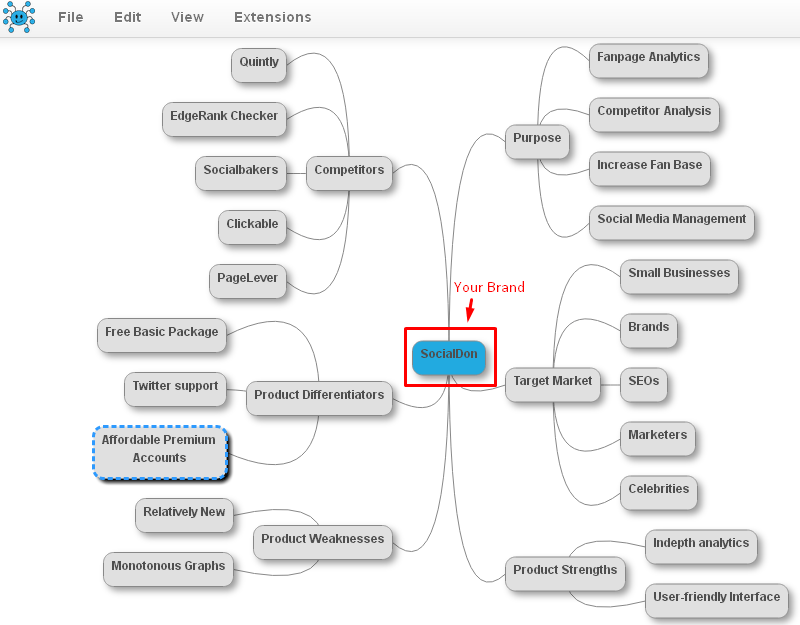


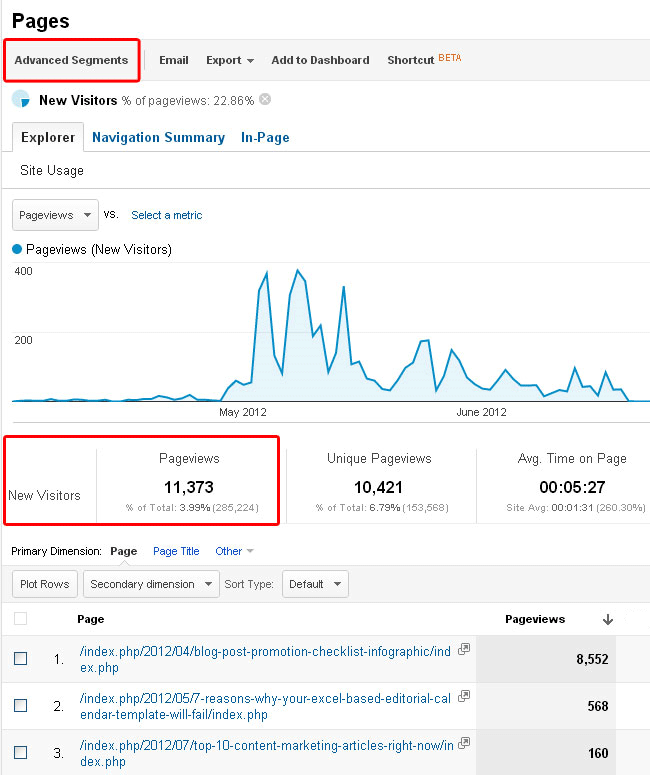


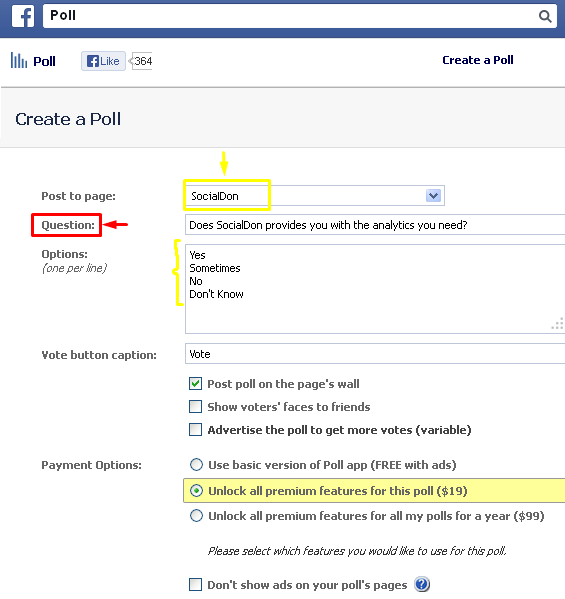
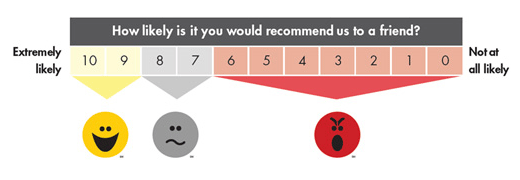

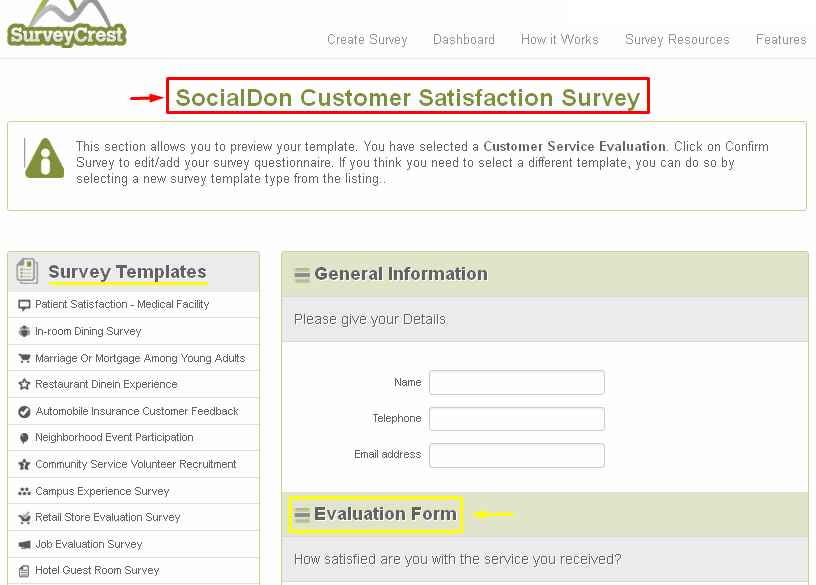
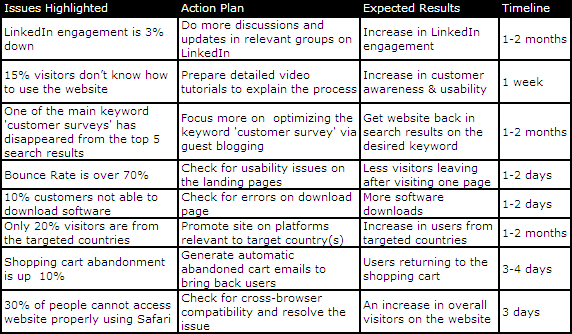
Comments (14)